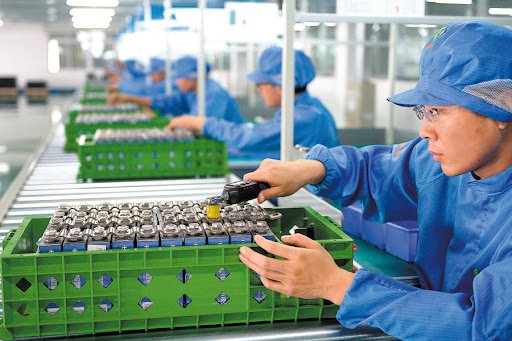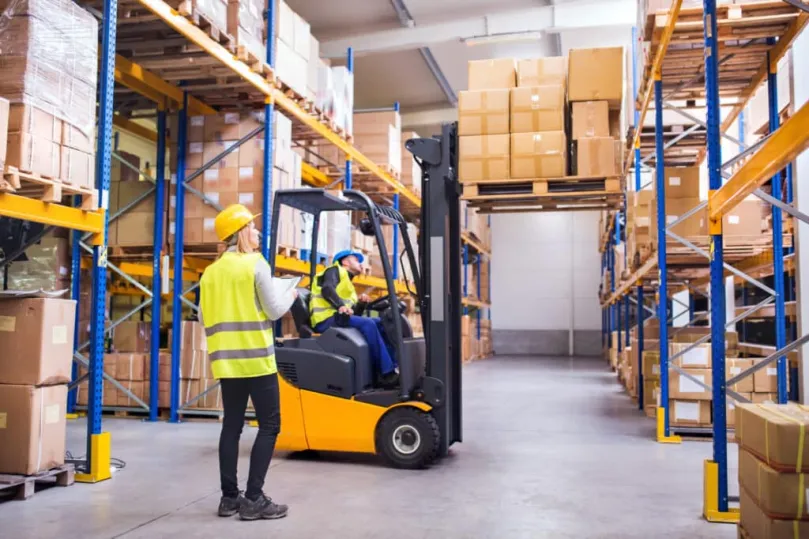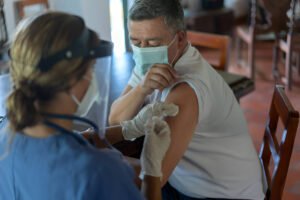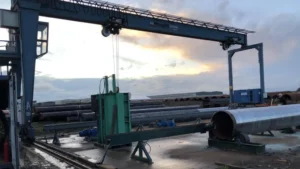The world is moving toward cleaner energy and electric mobility — and lithium-ion batteries are at the center of this transformation.
From electric vehicles to smartphones and solar energy storage, lithium-ion batteries power our everyday lives.
But behind this innovation lies a growing concern: the health and safety of workers involved in battery manufacturing.
In this article, we’ll dive into how lithium-ion batteries are made, what potential health risks exist in the process, and what safety measures can protect those who power this booming industry.
🔋 1. Why Lithium-Ion Battery Manufacturing Is Growing Rapidly
The demand for lithium-ion batteries has skyrocketed due to:
- The global shift toward electric vehicles (EVs).
- Renewable energy storage systems in homes and industries.
- The increase in consumer electronics like phones, laptops, and wearables.
By 2030, the global lithium-ion battery market is expected to exceed USD 180 billion, creating millions of new jobs — but also new health and safety challenges.
⚙️ 2. What Happens Inside Battery Manufacturing Plants

Battery production involves multiple stages:
- Mixing and coating of cathode and anode materials.
- Cell assembly, where electrodes are layered and sealed.
- Electrolyte filling, using volatile organic solvents.
- Formation and testing, where batteries are charged for the first time.
Each step requires precision — but also exposes workers to various chemical, thermal, and physical hazards.
☣️ 3. Key Health Risks in Lithium-Ion Battery Production
a. Chemical Exposure
Workers handle materials like lithium, nickel, cobalt, and manganese, which can cause:
- Skin irritation and allergic reactions.
- Respiratory issues from inhaling fine metallic dust.
- Long-term effects on lungs and kidneys with repeated exposure.
Solvents such as N-methyl-2-pyrrolidone (NMP) used in electrode coating can also affect the nervous and reproductive systems if not controlled properly.
b. Thermal & Fire Hazards
Improper handling of lithium compounds or short circuits during testing can cause thermal runaway — leading to fires or explosions.
Even a small spark in a dry room can ignite combustible dust.
c. Ergonomic & Fatigue Risks
Long hours in cleanroom suits, repetitive tasks, and limited ventilation contribute to heat stress, fatigue, and musculoskeletal problems.
d. Psychological Stress
High production targets and strict cleanroom rules can increase mental stress, impacting overall well-being.
🧪 4. Safety Measures and Best Practices
Companies must adopt proactive safety standards, including:
- Ventilation & Dust Control:
Install HEPA filtration and local exhaust systems in production lines. - Personal Protective Equipment (PPE):
Respirators, gloves, anti-static suits, and goggles must be mandatory. - Regular Health Surveillance:
Periodic medical checkups for workers exposed to heavy metals and solvents. - Fire & Chemical Training:
Employees should be trained to handle spills, leaks, or overheating incidents. - Automated Systems:
Using robotics for dangerous tasks reduces direct human exposure.
🌍 5. Regulatory Oversight and Global Standards
Global safety bodies like OSHA (Occupational Safety and Health Administration), NIOSH, and EU-OSHA are updating regulations to address new industrial hazards arising from the EV revolution.
OSHA emphasizes hazard communication, chemical labeling (HazCom standard), and worker training to prevent exposure in high-risk environments.
Battery manufacturers are encouraged to follow ISO 45001 standards for occupational health and safety, along with environmental compliance (ISO 14001).
🧰 6. The Future of Safe Battery Production
As technology evolves, AI-powered monitoring systems, smart PPE, and predictive safety analytics are being introduced to prevent incidents before they occur.
Companies that invest in worker safety will not only reduce risks but also improve productivity, brand reputation, and sustainability credentials.
🏢 About OSHAssociation
OSHAssociation (Occupational Safety and Health Association UK) is a global leader in promoting workplace health, safety, and environmental standards.
The organization works with industries, training centers, and professionals to build a culture of safety excellence worldwide.
Through certifications, workshops, and safety audits, OSHAssociation empowers organizations to reduce accidents, improve compliance, and protect lives.
Visit oshassociation.org to learn more about upcoming safety programs and memberships.






